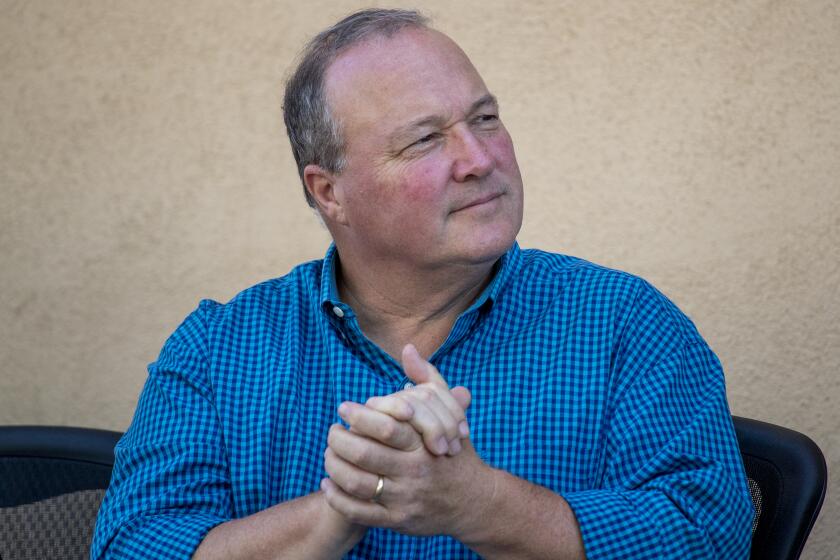‘An aggressive proposal that touched a lot of nerves’: Why Gov. Brown’s plan to stem the housing crisis failed

The idea behind Gov. Jerry Brown’s plan to stem the state’s housing affordability crisis was simple: Make it easier to build houses.
If developers pledged to set aside some units in their projects for low-income residents, the governor’s proposed legislation would have eliminated some local hurdles to building, likely leading to a modest increase in construction.
Yet the proposal the governor unveiled in May represented a profound shakeup in how the development process would have worked in California. The measure challenged the primacy of local control over housing, inflamed powerful entrenched interests and was eyed warily by the very groups representing those the plan was supposed to help.
Because of the resistance, Brown’s effort became so unpopular in the state Capitol that not one of 120 lawmakers was willing to publicly stand behind it. After weeks of little action, the plan died a quiet death last month, never having received a vote in the Legislature.
I think it was an aggressive proposal that touched a lot of nerves.
— Assemblyman David Chiu (D-San Francisco)
“I think it was an aggressive proposal that touched a lot of nerves,” said Assemblyman David Chiu (D-San Francisco), the chairman of the Assembly Housing and Community Development Committee.
The defeat of Brown’s effort reveals the high obstacles in the way of the governor and legislators who hope to make meaningful increases to home building in California at the same time the problem is getting worse. The state’s average home price of $466,900 is nearing 2 ½ times the national figure and rising.
Don Perata, the former president pro tem of the state Senate and now a lobbyist and executive director of the California Infill Builders Federation, said the governor’s struggles convinced him that the issue won’t get resolved without a statewide ballot measure.
“When you walk out of your house in the morning, the problems you see are traffic, housing,” said Perata, who supported Brown’s plan. “These are the problems that people want to see you take care of. And that was such a failure.”
In California, cities and counties control what is built in their communities. But study after study has pointed to the hurdles local governments put in front of development — such as parking requirements and lengthy environmental reviews — as reasons why homes aren’t built at the rate needed to keep pace with rising prices.
See the most-read stories this hour »
Last year, the independent Legislative Analyst’s Office estimated the state would need to nearly double the rate of planned housing production and build about 100,000 more units a year than currently planned, primarily in desirable coastal communities, to meet demand from job growth and growing populations.
Brown’s plan took aim at these local restrictions. It would have allowed developers to build without further review on land planned for a set number of units if the developer reserved some units for low-income residents.
For instance, a 300-unit condominium project would have qualified if it was proposed on land zoned for that number of units, but not if the land was planned for single-family homes.
Still, Brown’s proposal would have wiped away the laundry list of approvals many cities, including Los Angeles and San Francisco, require aside from zoning. Though Los Angeles Mayor Eric Garcetti and San Francisco Mayor Ed Lee indicated their support as a way to increase affordability, other local governments resisted because it took away their power.
Cities and counties place restrictions on development because their residents want them, said Dan Carrigg, legislative director of the League of California Cities, which opposed the governor’s plan.
“Cities are little functioning democracies,” Carrigg said. “Public input and transparency are cornerstones to the process.”
Asked last week why his plan didn’t go anywhere, Brown blamed local governments.
“What, you mean why people don’t want to cut red tape and overcome local control?” Brown said. “Because people don’t like those changes. Ask the League of Cities.”
Still, more powerful interests than cities opposed the governor.
Labor unions and environmental groups, both highly influential on the state’s ruling Democratic majority, became the proposal’s fiercest antagonists.
Their beef? Brown’s plan would have allowed qualifying projects to avoid additional review under the California Environmental Quality Act, known as CEQA, the state’s chief environmental law governing development.
The 1970 law has helped preserve the state’s environment, but has also been sharply criticized by many including Brown, who contends its restrictions can strangle development and that it’s abused by labor unions and others to leverage labor-friendly hiring rules and other perks.
Robbie Hunter, the head of the State Building and Construction Trades Council, acknowledged that some labor groups have used the environmental law this way. But he argued that’s no different than developers and businesses that have also threatened CEQA lawsuits to stymie rivals’ projects.
“We’re the scapegoat for a lot of things,” Hunter said.
Hunter said CEQA protects construction workers by requiring developers to study construction sites prior to building, ensuring that workers won’t breathe in hazardous materials. More broadly, Hunter said he was concerned that Brown’s housing plan didn’t require qualified developers to pay construction workers what’s known as “prevailing wages” — a higher amount often equivalent to union pay.
“You cannot address the issue of affordable housing by driving the construction workers who are building the affordable housing into needing the affordable housing,” Hunter said.
SIGN UP for the free Essential Politics newsletter »
Brown opposed the higher-pay rules, saying he was concerned about their cost. In turn, the construction workers union went all-in against the plan, leading a coalition of more than 60 labor and environmental groups as well as community organizers and even renters’ organizations in opposition.
Citing a lack of progress in negotiations with the governor’s office, the coalition walked away from the table in early August. The plan officially died fewer than 10 days later.
What might have seemed surprising about that coalition was opposition from groups representing low-income residents and tenants — the people Brown’s plan was designed to help.
Aimee Inglis, the acting director for Tenants Together, a statewide advocacy organization for renters, said the governor’s proposal wasn’t going to improve renters’ lives. The more acute crisis isn’t the housing shortage, Inglis said, but rather land speculation and other forces driving poor residents from their communities.
Brown’s plan would have made it easier for developers to tear down existing housing to build new homes. Even if that new construction created more units for low-income residents, it still would have displaced those who have lived in neighborhoods for a long time, Inglis said. Beyond that, she said, removing some local approval would have cut renters from debates over where housing should go and what it should look like.
“We support affordable housing,” Inglis said. “But it’s not important enough right now for us to give up all this other power.”
After Brown’s plan received a chilly reception when he first announced it, the governor agreed to spend $400 million on low-income housing subsidies if legislators approved his streamlining proposal. Democratic lawmakers have pushed for years for more state housing dollars, but Brown has resisted. With the failure of the housing plan, the $400 million is now sitting unspent.
Brown implied that cash might get legislators back to the table for future debates over streamlining housing production.
“There’s always arguments,” he said, “but we still have the money.”
Follow @dillonliam on Twitter
ALSO
Low-income housing negotiations are done for the year, Assembly speaker says
Gov. Jerry Brown’s housing plan could wipe away development rules in Los Angeles and San Francisco
Labor unions, environmentalists are biggest opponents of Gov. Brown’s affordable housing plan
UPDATES:
2:23 p.m.: This article was clarified to better reflect the position of Inglis, the acting director of Tenants Together, on the state’s housing shortage.
This article was originally published at 12:05 a.m.
More to Read
Get the L.A. Times Politics newsletter
Deeply reported insights into legislation, politics and policy from Sacramento, Washington and beyond. In your inbox three times per week.
You may occasionally receive promotional content from the Los Angeles Times.











